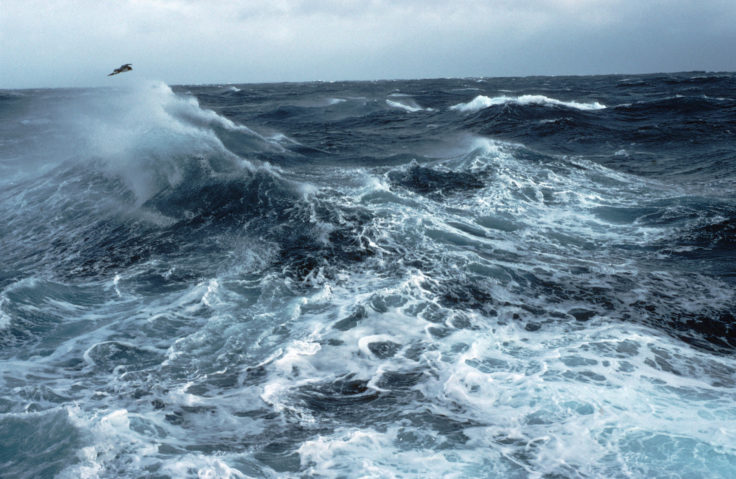British Antarctic Survey contributes to new international study that finds a surprising increase in the amount of dense water sinking near Antarctica, following 50 years of decline.
Dense water formed near Antarctica, known as Antarctic Bottom Water, supplies oxygen to the deep ocean. Bottom water also forms part of the global network of ocean currents that influences climate by storing heat and carbon dioxide in the ocean. Changes in bottom water formation can therefore impact global climate and deep ocean ecosystems.
The study, led by Dr Alessandro Silvano from the University of Southampton and CSIRO and published in the journal Nature Geoscience, documents an increase in the supply of bottom water to the deep Indian and Pacific Oceans. "Over the past 50 years of oceanographic campaigns we have seen a reduction in the amount of dense water reaching the deep ocean' Dr Silvano said.
"This trend was mysteriously interrupted in 2018. The research found that unusual wind patterns near Antarctica changed ocean currents in the Ross Sea where bottom water is formed. The changes in wind and currents increased the amount of ocean cooling and freezing. The extra cooling and freezing, in turn, increased the density of water that sinks into the deep ocean, producing additional dense bottom water.
We found that an unusual combination of two climate phenomena drove the renewal of bottom water formation: an extreme El Niño event occurring at the same time as stronger and southward-shifted westerly winds," said Dr Silvano. "These results show how remote forcing can influence Antarctic processes and climate."

Co-author Annie Foppert, from the Australian Antarctic Program Partnership and CSIRO's Centre for Southern Hemisphere Oceans Research, said,
"Evidence suggests the gradual decline in bottom water formation over the past five decades probably resulted from increased melt of the Antarctic Ice Sheet. The surprising rebound in recent years shows how extreme climate events can temporarily reverse long-term trends in Antarctic climate.
In the future, we expect the accelerating melt of the Antarctic Ice Sheet to reduce the formation of bottom water" said Dr Silvano. "But climate extremes like those that drove the recent rebound in bottom water formation are also projected to become more common if greenhouse gas emission by human activities continue at current rates.
Further work is needed to understand how these competing factors will affect bottom water formation in a warming climate."
Co-author Professor Paul Holland, leader of the Shelf Seas group within the Polar Oceans team at British Antarctic Survey, explains,
"For many decades we have seen that the waters around Antarctica are getting gradually less salty, and this signal is working its way through the global oceans. Many scientists assume that this change is caused by ice loss from the Antarctic Ice Sheet, pouring more fresh water into the oceans.
This study shows that over the last few years, the gradual freshening has been interrupted. Instead, a change in sea ice growth around Antarctica has caused the waters to get more salty. We are now watching this region closely to see whether the freshening trend resumes after a few years, or whether the change in sea ice growth will persist in future."
The international study involved scientists from Australia (CSIRO, the Centre for Southern Hemisphere Oceans Research, the Australian Antarctic Program Partnership), U.K. (University of Southampton and British Antarctic Survey), Italy (Parthenope University), Japan (National Institute of Polar Research and the University of Tokyo) and the U.S.A. (Princeton University and Woods Hole Oceanographic Institution).
Read the paper 'Recent recovery of Antarctic Bottom Water formation in the Ross Sea driven by climate anomalies' by Alessandro Silvano, Annie Foppert, Stephen R. Rintoul, Paul R. Holland, Takeshi Tamura, Noriaki Kimura, Pasquale Castagno, Pierpaolo Falco, Giorgio Budillon, F. Alexander Haumann, Alberto C. Naveira Garabato & Alison M. Macdonald in Nature Geoscience here: https://www.nature.com/articles/s41561-020-00655-3






